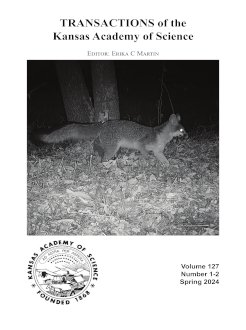Morphological plasticity in response to environmental variation facilitates the persistence of species in multiple habitats. Plastic morphological responses have been reported for a variety of stream fishes moving from lotic streams with shallow and regular flow to lentic ponds with still or standing water, presumably allowing them to succeed in vastly different environments. We collected Bluntnose Minnow (Pimephales notatus) from the Flint Hills of Kansas to test for differences in the morphology and diets between stream and pond habitats. We predicted that differences in food resources and life in lentic or lotic habitats would be reflected in their morphology. Relative gut lengths and gut contents of specimens from streams and ponds were hypothesized to be associated with presumed food availability differences in these habitats. In contrast to our prediction, the ratio of gut length to standard length was not different between streams and ponds; however, we also did not find a difference in diet between the two habitats. Body shapes based on geometric morphometric analysis also were not different between habitats. Further investigation into shifts in resource use and a better understanding of the number of generations in which populations have occupied ponds would provide more insight into why we did not find variation in the morphology of these fish between ponds and streams.
How to translate text using browser tools
11 June 2024
Morphological Plasticity of Bluntnose Minnow Pimephales notatus from Pond and Stream Habitats
Abigail Rick,
Peter J. Pfaff,
Keith B. Gido,
Michi Tobler,
Hannah Hoffman-Colburn
ACCESS THE FULL ARTICLE





